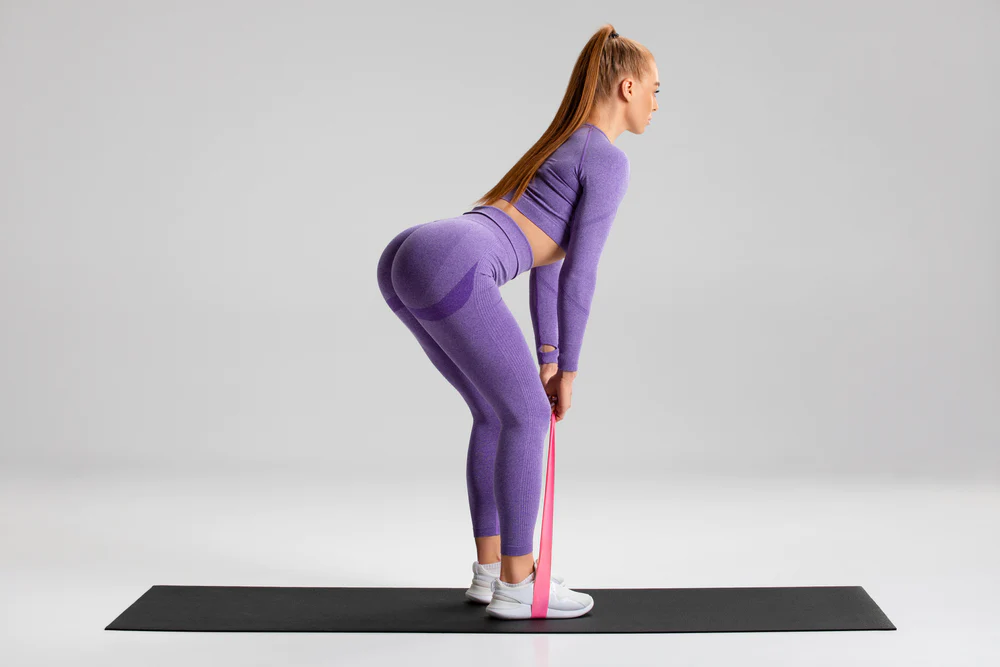Introduction:
In the ever-evolving landscape of fitness and rehabilitation, resistance bands have emerged as versatile tools that offer a spectrum of benefits for muscle and joint recovery. These unassuming, elastic bands have gained popularity not only among fitness enthusiasts but also within the realm of physical therapy. Their effectiveness in promoting strength, flexibility, and overall well-being makes them an invaluable addition to any recovery regimen.
Section 1: Understanding Resistance Bands
Resistance bands are elastic bands made of rubber, latex or TPE Material* that come in various shapes, sizes, and resistance levels. Their elasticity allows for progressive resistance, meaning the resistance increases as the band is stretched. This unique quality makes them adaptable for individuals at different fitness levels and stages of recovery.
Section 2: Building Muscle Strength
One of the primary benefits of resistance bands lies in their ability to aid in muscle recovery and strengthening. Whether you’re recovering from an injury or looking to enhance your overall muscle tone, resistance bands offer a low-impact and customizable solution. Unlike traditional weights, resistance bands provide constant tension throughout the entire range of motion, activating muscles in ways that free weights might not.
Resistance bands target specific muscle groups without putting excessive strain on joints, making them an ideal choice for individuals with joint issues or those in the early stages of rehabilitation. They allow for controlled and gradual muscle engagement, helping rebuild strength without risking injury.
Section 3: Enhancing Joint Flexibility and Mobility
Joint mobility is a critical component of overall health, especially for those recovering from injuries or dealing with conditions like arthritis. Resistance bands excel in promoting joint flexibility by allowing controlled movements that encourage a full range of motion. Incorporating resistance band exercises into a routine can improve joint flexibility, reduce stiffness, and enhance overall mobility.
For instance, simple exercises like leg lifts or arm circles with resistance bands can effectively target specific joints, promoting increased flexibility. The bands also enable individuals to perform dynamic stretches, which are essential for warming up joints before more intense activities or workouts.
Section 4: Rehabilitation and Injury Prevention
Physical therapists frequently incorporate resistance bands into rehabilitation programs to address specific muscle imbalances and weaknesses. The controlled resistance provided by the bands allows therapists to tailor exercises to an individual’s unique needs, gradually rebuilding strength and stability.
In the realm of injury prevention, resistance bands are invaluable. Strengthening the muscles around vulnerable joints can provide added support and reduce the risk of future injuries. Athletes and fitness enthusiasts alike can benefit from incorporating resistance band exercises into their regular routines to maintain a balanced and resilient musculoskeletal system.
Section 5: Versatility and Accessibility
One of the greatest advantages of resistance bands is their versatility. They are lightweight, portable, and take up minimal space, making them accessible for home use, travel, or rehabilitation settings. Individuals can easily incorporate resistance band exercises into their daily routines, whether at the gym, in the office, or in the comfort of their own homes.
The wide range of resistance levels available in bands allows for gradual progression as strength improves, ensuring that users can continuously challenge themselves. This adaptability makes resistance bands suitable for individuals of all ages and fitness levels, from beginners to seasoned athletes.
Resistance Bands for Recovering Joint Strength
Section 6: Sample Resistance Band Exercises for Recovery
- Clamshells:
- Targets: Hip abductors
- How to: Place a resistance band just above the knees while lying on your side. Keep your feet together and lift the top knee upward against the resistance.
- Bicep Curls:
- Targets: Biceps
- How to: Stand on the middle of the resistance band with feet shoulder-width apart. Hold the band with palms facing forward and perform bicep curls by flexing at the elbow.
- Leg Press:
- Targets: Quadriceps, hamstrings, and glutes
- How to: Anchor the band around a sturdy post or use a door anchor. Sit with your back against the anchor point, extend your legs, and press against the resistance.
- Shoulder External Rotation:
- Targets: Rotator cuff muscles
- How to: Secure the band at chest height, hold one end with the hand across your body, and rotate your arm outward against the resistance.
- Seated Row:
- Targets: Upper back muscles
- How to: Secure the band around a stationary post, sit with legs extended, and pull the band toward your torso, squeezing your shoulder blades together.
Conclusion:
Resistance bands have undoubtedly earned their place in the world of fitness and rehabilitation. Their ability to promote muscle strength, joint flexibility, and overall recovery makes them a versatile and accessible tool for individuals with diverse needs. Whether you’re recovering from an injury, looking to prevent future issues, or simply aiming to enhance your fitness routine, resistance bands offer a practical and effective solution. Embrace the power of elasticity and make resistance bands a staple in your journey toward improved muscle and joint health.
TPE Material*
Thermoplastic Elastomer (TPE) material has emerged as a game-changer, surpassing the limitations of traditional latex and rubber. TPE’s versatility and unique qualities make it a superior choice for various applications. Its benefits include heightened durability, eco-friendliness, and hypoallergenic properties. Unlike latex, TPE is latex-free and does not trigger allergic reactions, making it a safer option. Furthermore, TPE’s resilience and environmental sustainability set it apart from rubber, positioning it as the material of choice for those seeking a reliable, safe, and eco-conscious alternative.
Buy ActiveLifeZone Resistance Bands Made with TPE Material from AMAZON





